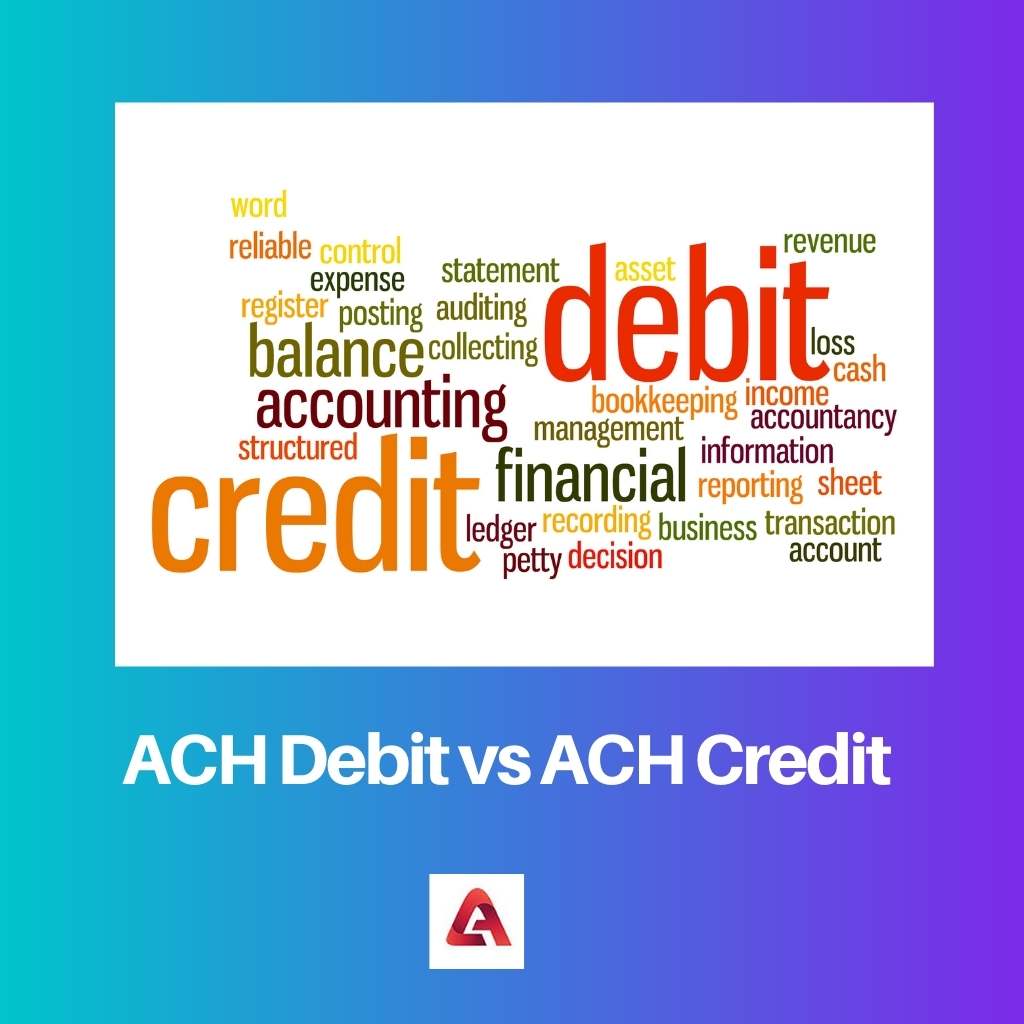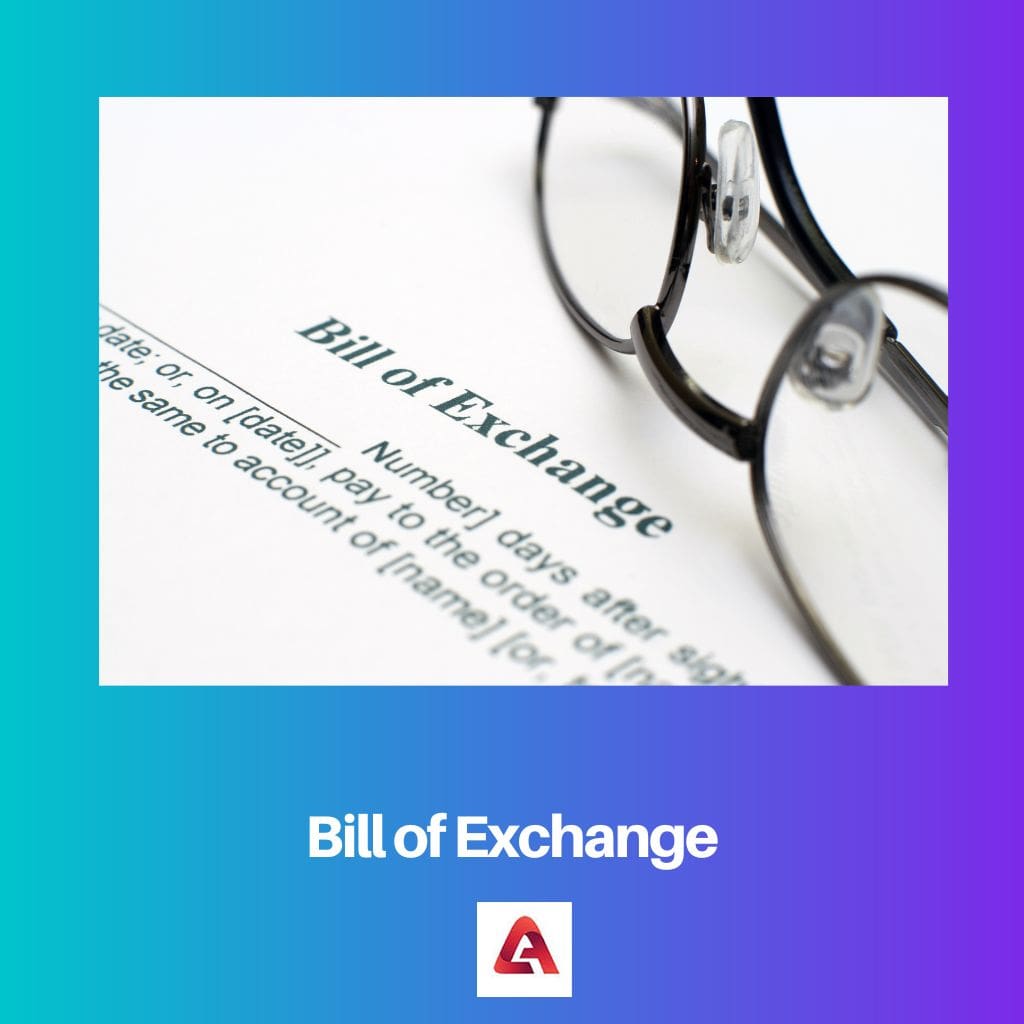The terms ‘ACH Debit’ and ‘ACH Credit’ are two terms related to the processes of transaction of money. But, they have different sets of meanings and processes of proceeding transitions.
ACH has the full form of the Automated Clearing House. ACH refers to the network’s online mode used for transacting payments between two parties from the financial houses.
In other words, the payments are conducted between two people, known as the operator and the receiver.
The one who generates the payment is known to be the operator; on the other hand, the one who receives the payment is known to the receiver. Also, it is a very convenient and easy method of transacting money.
Key Takeaways
- ACH Debit is a type of electronic funds transfer that allows one party to debit funds from another party’s bank account.
- ACH Credit is a type of electronic funds transfer that allows one party to credit funds to another party’s bank account.
- ACH Debit and Credit are commonly used for bill payments, direct deposits, and other financial transactions.
ACH Debit vs ACH Credit
ACH debit is the online transfer of money to enable someone to withdraw money from a payer’s account started by payee. ACH credit is the electronic transferring of money from one side to third parties accounts or recipients accounts by businesses.

ACH Debit refers to the withdrawal of money, that is requested by the receiver.
It is an automatic transaction system that directly requests the financing house to debit the money from the operator’s account and further credit it to the receiver’s account.
This type of transaction is done when some recurring monthly payment is set up for specific billing or payment purposes.
On the other hand, ACH Credit refers to the payment of money that is led by the operator from their respective bank account to the receiver’s bank account.
ACH Credit is also an automatic transaction system that can be done from anywhere without even going to the financing house.
Also, it automatically credits the money to the receiver’s account after the request of the operator. This is a very convenient method of transaction, and hence, lately, it has become a monthly routine for many people.
Comparison Table
| Parameters of Comparison | ACH Debit | ACH Credit |
|---|---|---|
| Definition | The automatic transaction process that is led or requested by the receiver to the operator of the payment is known as ACH Debit. | The automatic transaction process that the operator leads to the financing house to pay the receiver is known as ACH Credit. |
| The Person Who Leads the Process of the Transaction | The ACH Debit is leaded or started by the receiver of the money. | The ACH Credit is leaded or started by the sender of the money. |
| Other Common Name | The ACH Debit is also commonly known as a ‘pull transaction’. | The ACH Credit is also commonly known as a ‘push transaction’. |
| Fee Charges | Generally, the ACH Debit does not include any fee charges for the transaction process. | Sometimes, the ACH Credit includes some amount of fee charges for the transaction process. |
| Payment Speed | The ACH Debit takes a comparatively long time for the transaction, and it takes about more than 3 business days or so. | The ACH Credit takes lesser time for transactions. Depending upon the operator, it can be transferred on the same day or in one or two days. |
| Transaction Type | The ACH Debit automatically deducts the money from the operator’s bank account and doesn’t require allowances every time he/she transacts, as it is set up with the automatic deduction. | The ACH Credit also automatically deducts the money from the operator’s bank account, but it requires an official allowance from the operator, every time he/she transacts. |
| Example | An example of ACH Debit is that when an individual initiates a monthly recurring payment for Bills. | An example of ACH Credit is that when an individual pays money for supplies to the supplier. |
What is ACH Debit?
The system that has introduced the automatic transaction of money from one place to the other and is led by the receiver is known as the ACH Debit.
As the first step of the transaction, the receiver requests or appeals for a transaction to the operator. Generally, these transactions are set monthly to make payments and other billing processes.
After requesting the financial house that is the bank further generates the payment process.
ACH Debit is also widely known as a ‘Pull Transaction’. It is called a pull transaction since the receiver indirectly pulls the payment from the operator, as they request the financial house to process the payment method to the receiver account.
The operator links their bank account with the receiver; therefore, the payment is generated after the request from the receiver.
Also, it is completely safe and user-friendly to use this payment system as the receiver requires some official details and verification. The receiver needs to have an American Bank account as well.
Generally, the ACH Debit does not include any fee charges for the transaction process. The ACH Debit takes a long time for the transaction, and it takes about more than 3 business days or so.
It is a monthly recurring payment service and therefore consumes a bit longer. Lately, ACH Debit is loved by many people as it makes the payment process easy, and now people do not require to rethink their monthly dues or so.
An example of ACH Debit is when an individual initiates a monthly recurring payment for Bills.
What is ACH Credit?
The payment that is initiated by the operator of the respective transaction is known as ACH Credit.
ACH Credit is also processed automatically by the process of online transaction network Clearing House Network (ACH) in America.
The operator requests the bank for the transaction process. When ACH Credit is requested for a refund, it is not easily deposited into the bank account.
It takes time. Also, the bank charges some amount of money for the transaction of money from the process of ACH Credit.
The ACH Credit is also commonly known as a ‘push transaction’. Since it is pushed or generated from the operator’s bank account to the receiver’s bank account, it is considered a pushed transaction.
The ACH Credit takes lesser time for transactions. Depending upon the operator, it can be transferred on the same day or in one or two days. The operator can easily control and generate the payment without any problem.
The ACH Credit also requires permission from the operator, every time they transact money. ACH Credit is flexible. It is convenient to use, but, the only problem is that it charges money for transactions sometimes.
Also, no one can misuse and mislead the operator for the transaction, as the bank initially verifies the receiver’s bank account. An example of ACH Credit is that when an individual pays money for supplies to the supplier.
Main Differences Between ACH Debit and ACH Credit
- The automatic transaction process that is led or requested by the receiver to the operator of the payment is known as ACH Debit. On the other hand, the automatic transaction process that the operator leads to the financing house to carry out the payment to the receiver is known as ACH Credit.
- The ACH Debit is leaded or started by the receiver of the money. On the other hand, the ACH Credit is leaded or started by the sender of the money.
- The ACH Debit is also commonly known as a ‘pull transaction’. On the other hand, the ACH Credit is also commonly known as a ‘push transaction’.
- Generally, the ACH Debit does not include any fee charges for the transaction process. On the other hand, the ACH Credit sometimes includes some fee charges for the transaction process.
- The ACH Debit takes a comparatively long time for the transaction, and it takes about more than 3 business days or so. On the other hand, ACH Credit takes lesser time for the transaction. Depending upon the operator, it can be transferred on the same day or in one or two days.
- The ACH Debit automatically deducts the money from the operator’s bank account and doesn’t require allowances every time he/she transacts, as it is set up with the automatic deduction. On the other hand, the ACH Credit also automatically deducts the money from the operator’s bank account, but it requires an official allowance from the operator every time he/she transacts.
- An example of ACH Debit is that when an individual initiates a monthly recurring payment for Bills. On the other hand, an example of ACH Credit is that when an individual pays money for supplies to the supplier.





